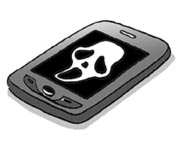Looking a modern Medusa in the eye

So what made Perseus different from other people who were turned into stone by Medusa?
Lee Eun-hi, a science writer, explains that Medusa’s strength came from the biological reaction humans have during frightening situations.
People who gazed directly upon the ugly Medusa were stricken with horror. Their bodies tensed up because of the stimulation of sympathetic nerves and the secretion of epinephrine, a neurotransmitter, which made their hearts beat faster and blood pressure drop.
Therefore, it is no exaggeration to describe the immobilization that onlookers felt as being “turned to stone.”
The reason Perseus could beat Medusa was that he could control his emotions and avoid being gripped by fear.
The bravery shown by Greek hero Perseus is a rarity today. As society became more complex, the things we have to fear increased. Various kinds of accidents, diseases and rapid changes in the environment make people nervous and fear for their futures.
Even in Korea, it has been reported that six out of 10 adults suffer from a phobia.
There are many different kinds of phobias: acrophobia, anthrophobia, agoraphobia, aerophobia, zoophobia and claustrophobia are just a few.
One Web site called “The Phobia List”
(phobialist.com) run by an American features over 530 kinds of phobias found in horror books. Simply looking at the list is enough to give you goosebumps.
Recently, another kind of phobia was defined: “smartphone-phobia.”
People who experience this kind of phobia are usually middle aged and have difficulty using modern technology. They have gotten smartphones through work or as gifts, but feel paralyzed by not understanding how the phones work.
Part of their fear is about the newness of the technology: A smartphone is not exactly a cell phone nor a computer, so they don’t know how to approach it.
Some people have an even stronger fear of modern technology. American psychologist Craig Brod calls this “technostress,” and people suffering from it feel physical symptoms like nausea when confronted with new technology.
However, there is no need to be scared of things we don’t understand. Fear always comes from ignorance. If we learn how to use the icons of a smartphone one by one, we will easily overcome “smartphone-phobia.”
We must face our fears like Perseus did and look our horrors in the eye, one by one.
*The author is an editorial writer of the JoongAng Ilbo.
By Kim Nam-joong










with the Korea JoongAng Daily
To write comments, please log in to one of the accounts.
Standards Board Policy (0/250자)